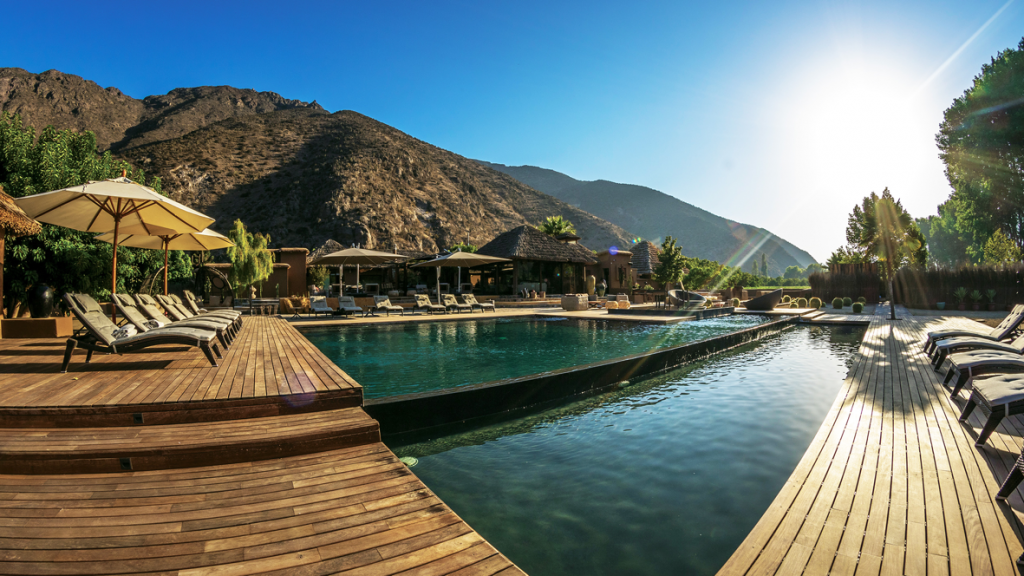
Introduction
Latin America is a huge region with many different terrains and climates. Typically, the most popular time to visit is from December to March but each of the four countries I represent can be enjoyed all year round. Below is a guide to help you encourage clients to consider travelling during off-peak times.
Whether you’re selling Patagonia, The Pantanal or trips to see turtles in Costa Rica, there are good reasons and many benefits to visit these regions in low season.
Argentina
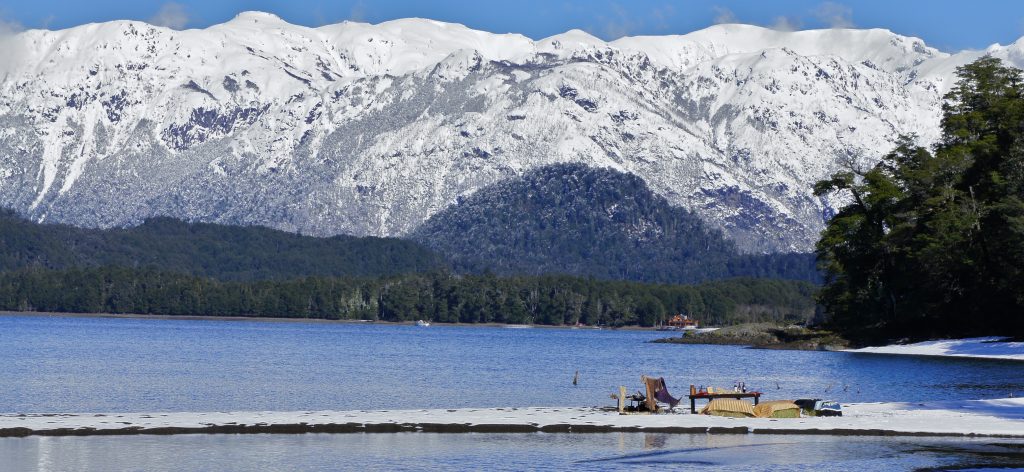
Argentina is packed with fantastic off-Peak and Shoulder season options to tempt your clients to break away from the herd and travel when it’s quieter. You’ll almost certainly be flying your clients around Argentina – seat availability on the planes is far less of an issue out of season, and your clients should be able to get their first choice of hotel and room type, as well as spending far less time getting from A to B as the roads are quieter.
Have you ever been to Buenos Aires in January or February? Well, I have and it’s h-o-t. And sooooo humid. With temperatures in the city rising to the high 30’s, an off-Peak visit is a much more attractive proposition for your clients who want to go shopping and sightseeing. Spring is a particularly beautiful time in this city of tree-lined streets.
Patagonia
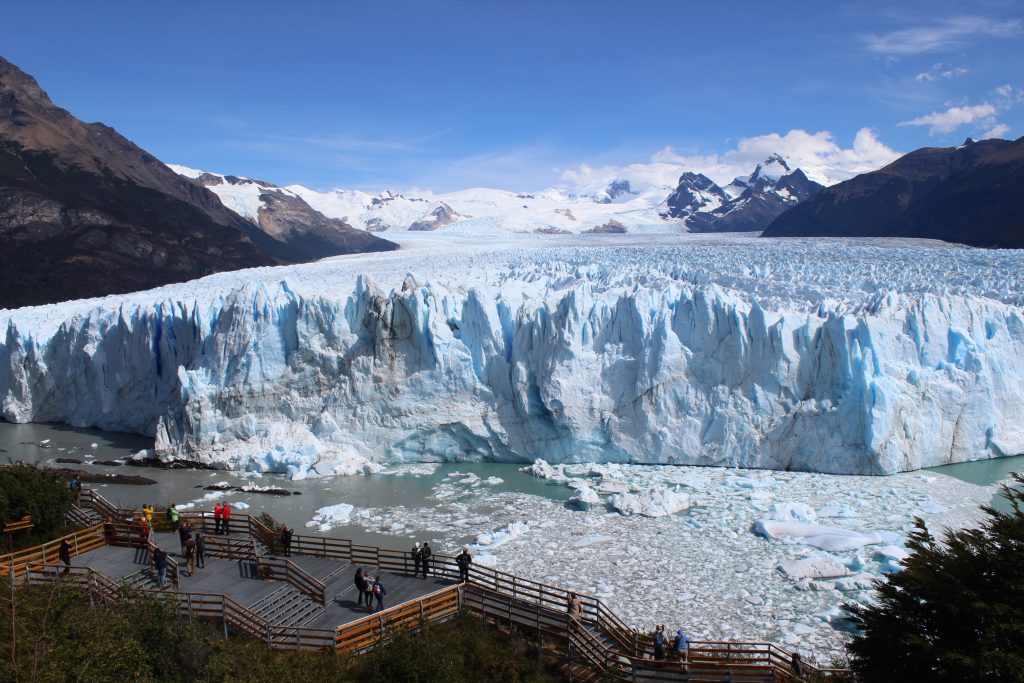
People always think they have to go to Patagonia between December and March. Well, they don’t! Argentine Patagonia is drop-dead gorgeous in April when the reds and yellows of autumn stand out against perfectly deep blue skies. Equally, October heralds the arrival of spring when the days start to get a little longer, and the landscape gives up its wintry monochrome in favour of some springtime flora. April and October are ideal for hiking the trails around El Chalten – in the summer, these trails can be busy with tourists from all over the world but if your clients can travel off-Peak, they will be rewarded handsomely with peace and quiet and enjoy the superb views from the trails they’ll pretty much have to themselves.
If you have clients who are up for a mid-winter visit to Patagonia, this is totally doable with the correct planning. Services are reduced and some properties do close down for the season but there are still a fair number that operate year-round and greet their winter visitors with welcoming arms.
Seriously, these seasonal destinations benefit enormously from out of season tourism so if your clients make the effort to get down to the El Calafate area in winter, their hosts will go overboard to make their stay as comfortable as possible.
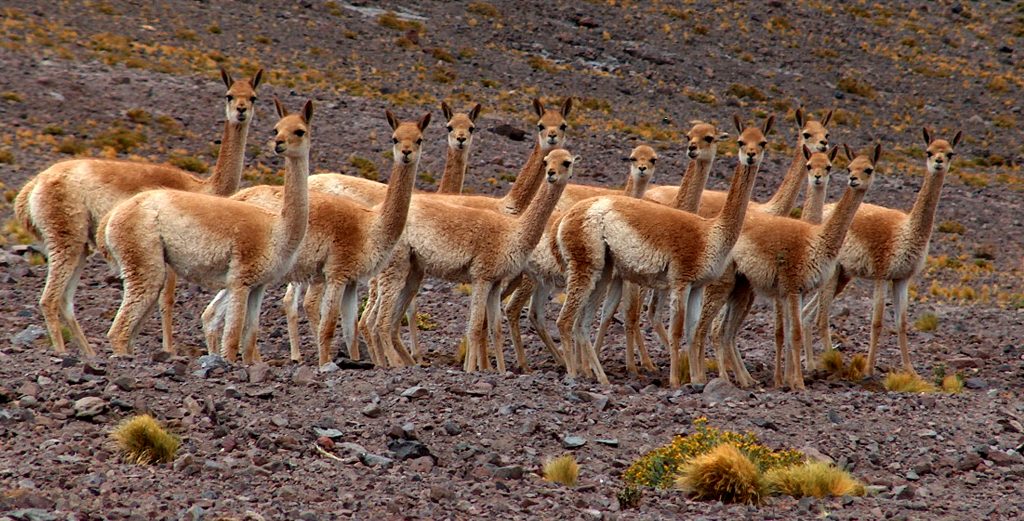
Further north, Salta and its environs are lovely year-round but the January to March rainy season up in the Northwest can severely disrupt road travel and is another good reason to urge your clients to visit Argentina outside of the January and February peak. It’s also worth remembering that Mendoza is also a year-round destination but the wine harvest that takes place in late February/March brings in lots of visitors. Best avoided – unless, of course, it’s your clients’ whole reason for going!
And finally Iguazu and the Northeast. I visited this region in February 2019. Yes, it was hot. V-e-r-y hot. In an ideal world, I may not have chosen to have gone when it was sooo hot. But you know what? I still had a fantastic time!
Brazil
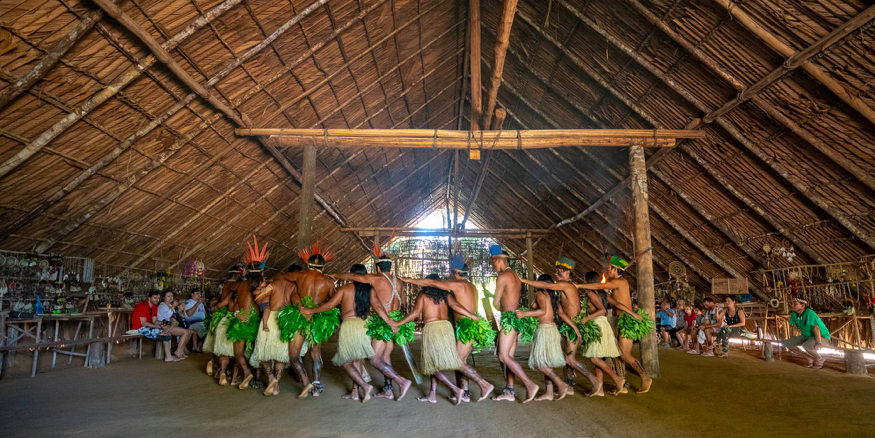
Rio is exceptionally exciting and busy over New Year and during Carnival. If your clients are not party animals, you’ll be doing them a massive favour by suggesting they visit Rio between March and mid-June, or between mid-September and mid-December. You’ll almost certainly be able to secure them their preferred hotel and room type, and nab a booking for them at one of the best tables at that amazing restaurant they’ve heard all about…
But it’s not just Rio that comes into its own out of season. The chances are your clients will be heading to the Pantanal or the Amazon. Think about it – all National Parks are places of outstanding natural beauty but it’s fair to say that the experience might be spoilt if there are lots of other tourists around. If your clients were given the choice, wouldn’t they prefer to visit a pristine waterfall when they’re likely to get the place practically to themselves? Or enjoy the serenity of a canoe ride along a brackish waterway in solitary splendour? All this is possible if they travel off-Peak.
Here’s a detailed rundown of what happens in the Pantanal and Amazon regions during the different seasons. Please keep in mind that this guide is not definitive – there are some crazy weather patterns out there that no one can predict. All the more reason to travel off-Peak in my opinion!
Pantanal
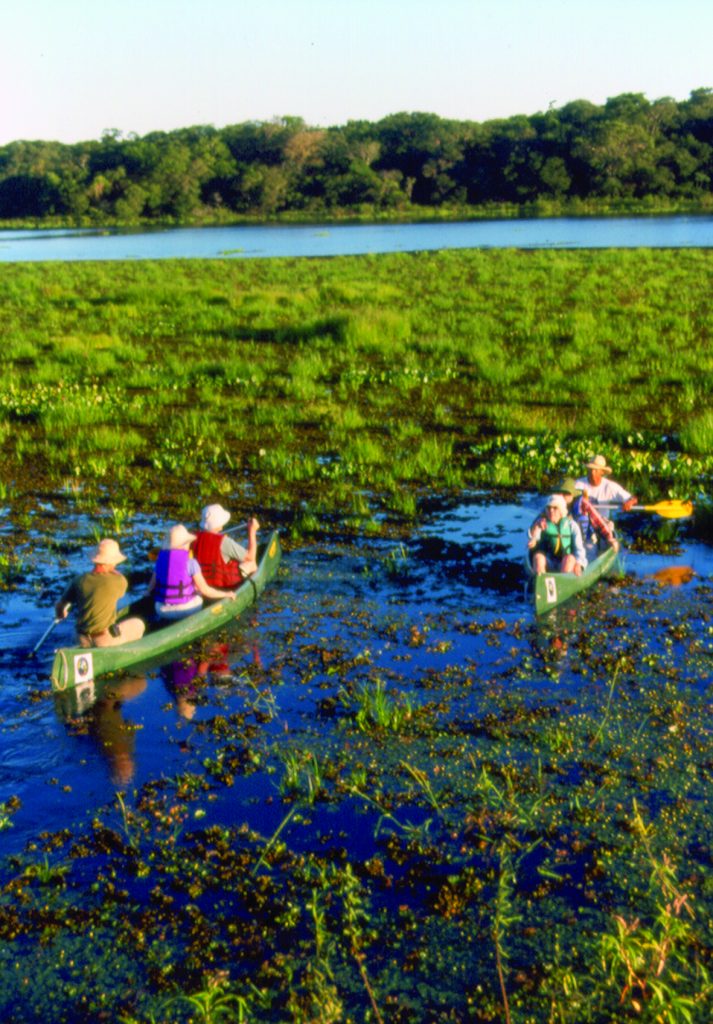
To be honest, there’s never a bad time to go to the Pantanal. The experience is outstanding any time of the year. It’s what your clients want to see and do that will dictate when they should go. As a rule of thumb though, the rainy season usually runs from December to March and it’s drier between May and November, but here’s a more detailed description of what goes on in the Pantanal throughout the year
October to December – Transition from Dry to Wet Season (aka Enchente)
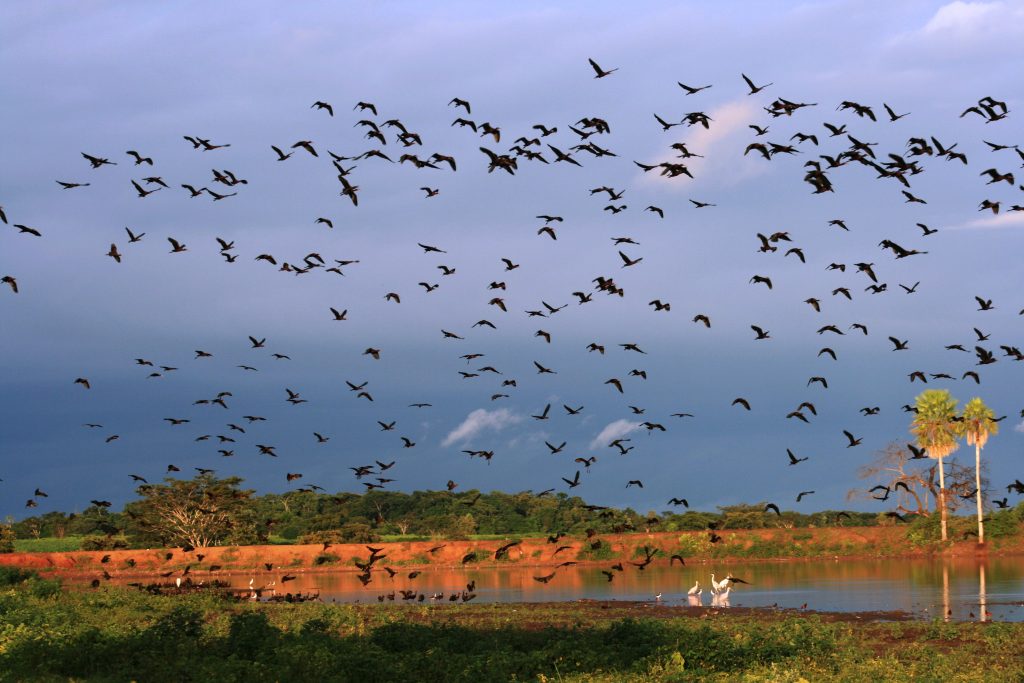
- Smaller waterways and lakes fill up with rainfall that’s fallen in the surrounding mountains and flows into the Pantanal basin.
- There’s a concentration of small birds at this time.
- Beautiful sunsets are reflected in these new bodies of water.
- The Pantaneiros move their cattle to higher ground.
January to March – Wet Season
- 60 to 78% of the Pantanal is submerged with 20 to 40cm of water during the wet season.
- Vegetation is at its peak.
- Migratory birds arrive from as far as Canada and USA, flying over 20,000 km (12500 mi), attracted by the abundance of fish.
- Boat tours explore the flooded forest.
- Daily showers and high temperatures reaching 33°C (91°F) and 80% humidity.
April to June – Transition from Wet to Dry Season (aka Vazante)
- Rain stops, water flows down to the Paraguay and Cuiaba rivers, and out of the basin.
- There’s a switch in the birdlife – the Northern hemisphere birds are gone, but newcomers arrive from as far as Antarctica and Patagonia.
- Nights are cooler and days are drier.
- Fish trapped in the lakes are a feast for other animals.
- The Pantaneiros bring cattle back to low lands.
July to September – Dry Season
- The rivers are much drier.
- Your clients will get to see the majestic Ipe trees blossoming in beautiful shades of pink, lilac and yellow.
- This is the best season for watching reptiles and mammals roaming the plains.
- The days and nights are much cooler, reaching 16°C (60°F) at night.
Amazon
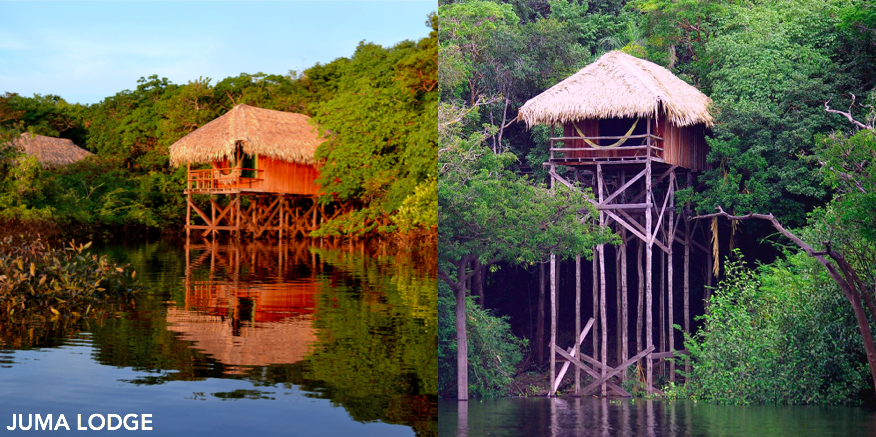
The Amazon is beautiful in any season, but activities can be quite different depending on the water level of the rivers. The rains are heaviest between the months of January through March. Even though it does rain more this time of year, it is still a good time to travel. The rain tends to be in the middle of the day or at night. In the rainy season, there are many flowers and the fruits attract birds and monkeys. From July to November the river levels start to go down, getting about 5cm lower every day.
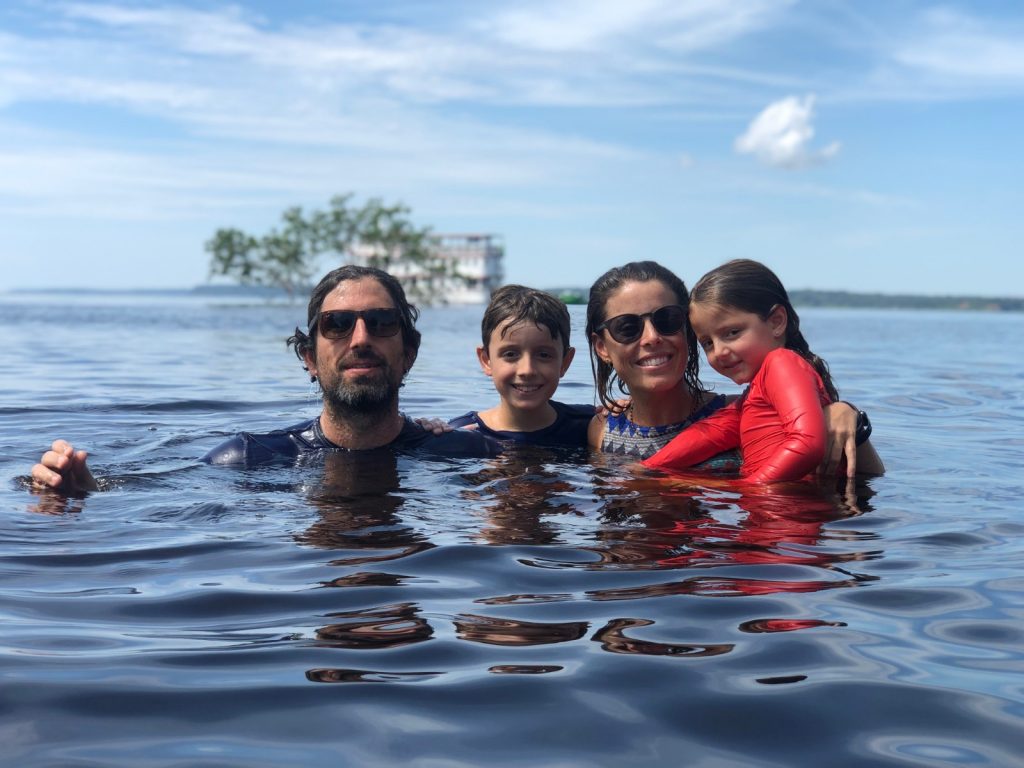
Carolina from Blumar travelled with her family in July 2019. They enjoyed blue sky on the entire trip. Not a single drop of rain. However, they were only able to enjoy one beach day as the water levels were still very high and the beaches hadn’t yet reappeared. (The best time for swimming stops is from October to January). During the wet season – December to June – the flooded forest can be explored by canoe.
December – the beginning of the Wet Season.
- The Andean rains and melt water bring about a considerable rise in the river levels.
February – May Wet Season (Flooding)
- Trees burst into bloom with new flowers and fruits.
- Mating season: the jungle comes alive with the noisy courtship of the animals.
- Overnight temperatures drop in April, and the almost-daily showers are short and sharp.
- Humidity is high but your clients will enjoy the colourful sunsets that come with it.
- The sunrise is spectacular too as it breaks through the morning fog that forms on the jungle canopy.
- All that noisy mating a few months earlier means babies! This is when the mammals produce their young.
- Add to that the daytime warmth and the myriad of butterflies at this time of year, and you’ll see why this is the best time for your clients to do boat tours along the tributaries into the flooded forests.
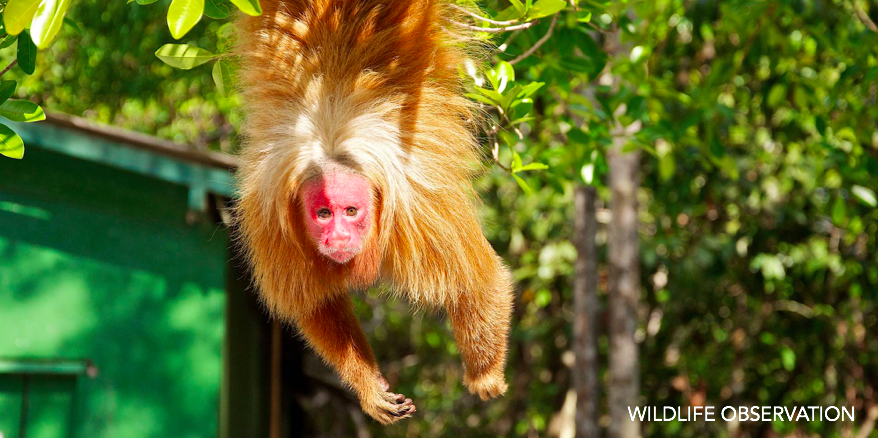
June – August Dry Season (Flood Peak)
- In June, the Amazon reaches its peak (between 10 to 14 meters) and rainfall starts to dwindle.
- By August, the river levels are rapidly subsiding. This is the time of year your clients should visit the Amazon if they’re interested in interacting with people of the riverside communities to get a feel for how they adjust to these seasonal variations, and to make the most of a canoe tour through the flooded forests to get up close to the canopy.
September – October Dry Season (Ebb Peak)
- September heralds the formation of sand banks and beaches where the wet season river used to be
- Larger animals like Capybara can be spotted as they head for the water.
- Birds gorge themselves on fish that get trapped in the lagoons and are joined by birds that migrate from North America.
- Forest hikes become accessible during this period.
To get a feel for all the Off-Peak and Shoulder season deals in Brazil, please head over to the ‘Special Offers’ page in the Client area on Blumar’s website.
Chile
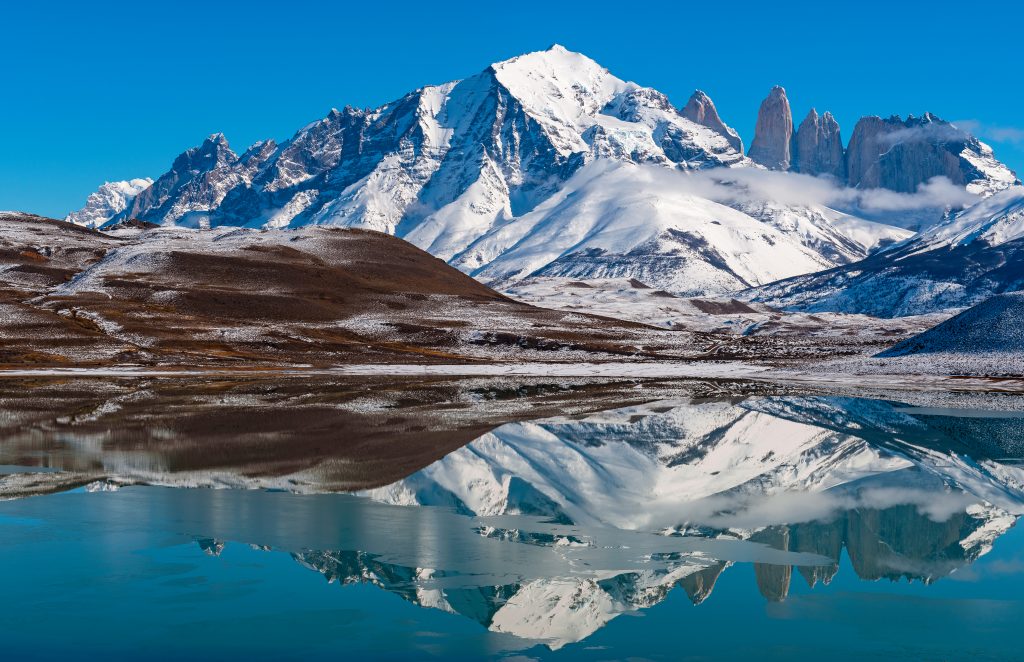
You can go to Patagonia in winter and have an amazing time! Yes, it’s true! Patagonia is an absolute peach of a winter destination.
So, what goes on in Patagonia in winter? Well, for one thing, Patagonia enjoys a break from the constant wild and windy weather that epitomises the far south. True – a winter storm or two might add to the drama and stir things up a bit but on the whole, Patagonia becomes all calm and serene.
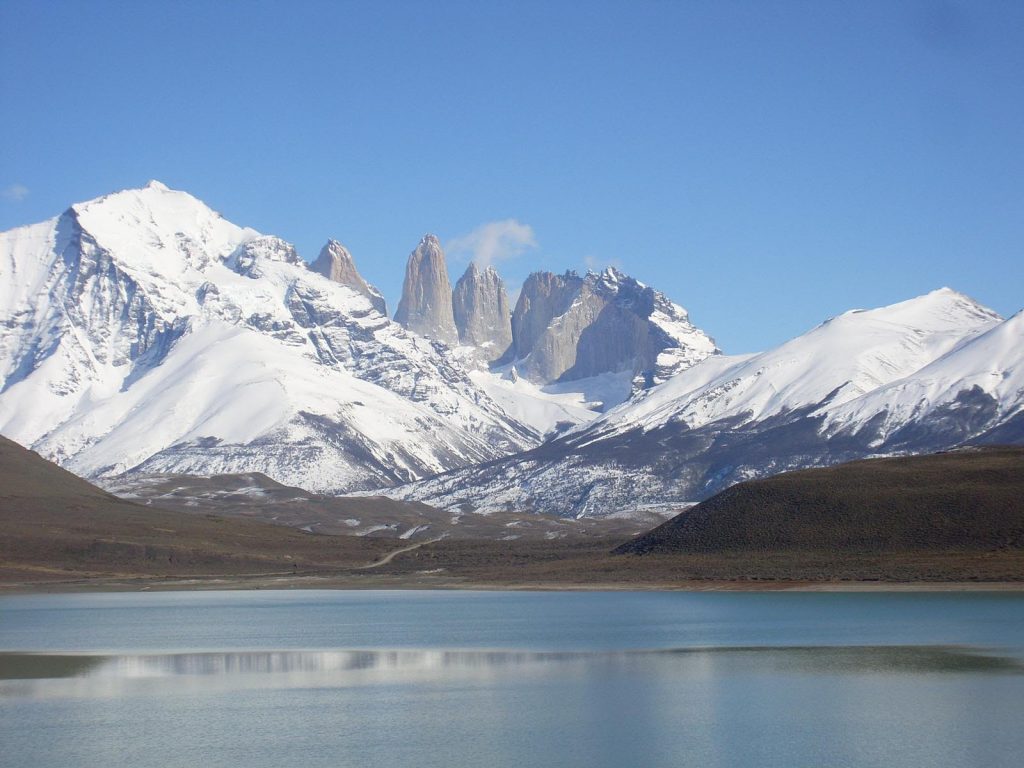
One of the best aspects of travelling in this region during the winter is the coziness – (dare I say ‘hygge’?) of the accommodation. When it’s particularly nippy outside, who doesn’t like arriving somewhere with a roaring fire and the aroma of a tasty dinner wafting through from the kitchen? Winter is the perfect excuse for tucking in to hearty meals and your clients won’t be disappointed.
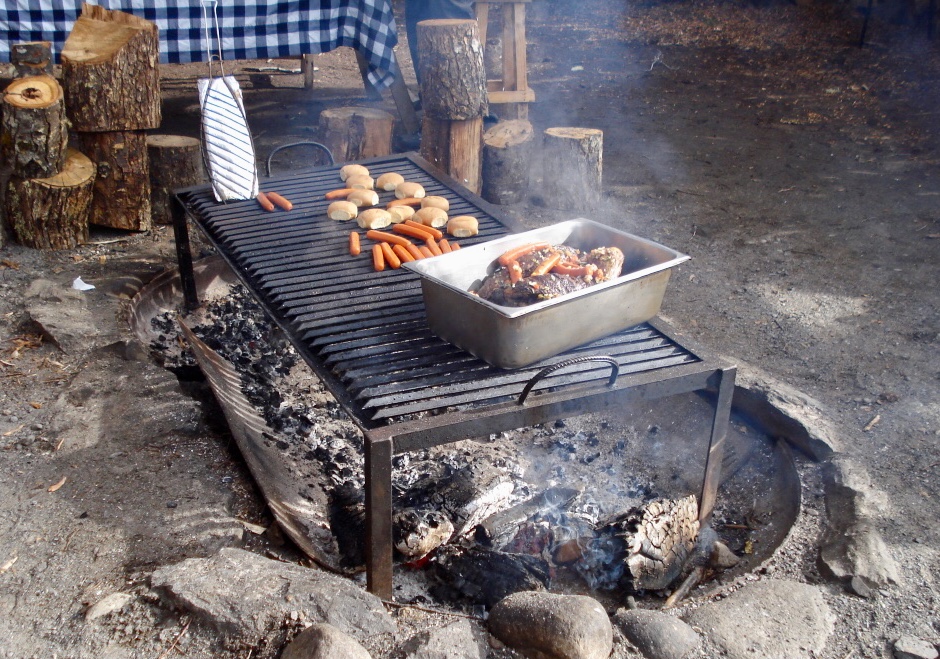
Make sure your clients have all the gear – temperatures can plunge to an extreme of -10 °C so the right clothing is a necessity: advise them to dress in layers. They’ll need a down jacket, gloves, a decent hat and plenty of socks. It goes without saying that your clients need to be made aware that winter travel needs to be planned with more care than at other times of year as the days are shorter and there are fewer services to work with. You may have to slow it all down a bit and do a bit of juggling but that’s where Southbound come into their own – they know which lodges are open, which flights and buses are scheduled. Plus, if a winter storm does come along and blankets your beautifully-crafted itinerary in snow and ice, the Southbound team are nearby and will swing into action (yes, they’ve done it before) to provide the best possible solution.
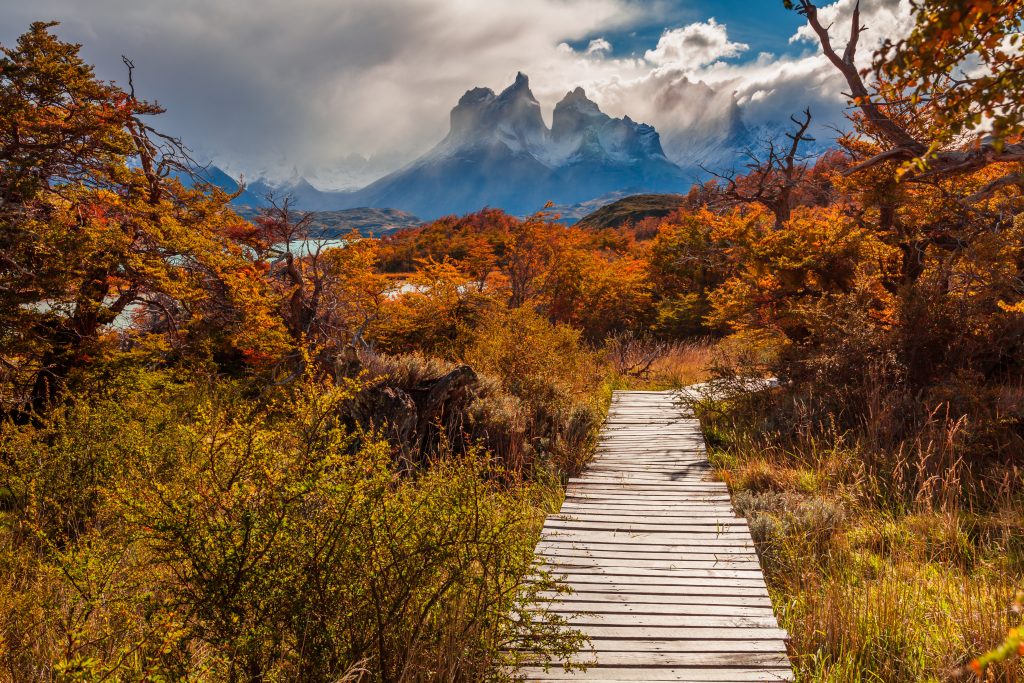
As I mentioned earlier, Team Southbound donned their thermals and ski gear for an in-depth winter visit to Punta Arenas and Torres del Paine NP in August. A night or two in Punta Arenas is recommended before the 3-hour scenic drive up to Puerto Natales. From there, it’s just a short drive into the Park. It may be the middle of winter, but the main trails are open year-round, unless snow (unusual) prevents access. The upsides of travelling this time of the year are:
- Hiking in near solitary splendour on the main trails is an absolute joy – your clients will experience the true immensity of Patagonia.
- The chances of seeing the local wildlife are far higher than in summer. Tell them to look out for guanacos – and maybe even a puma!
- Winter snow on the mountain peaks makes for stunning photos! This region is so photogenic – your clients will come back with albums and albums of the Massif reflected in calm, mirror-flat lakes.
So, send your clients to Patagonia in winter! They’ll be rewarded with spectacular snowy mountains, deserted trails and the silence of the mountains. And no crowds – just how a wilderness should be!
Chile’s best-kept secret in Peak Season? La Serena and Elqui Valley.
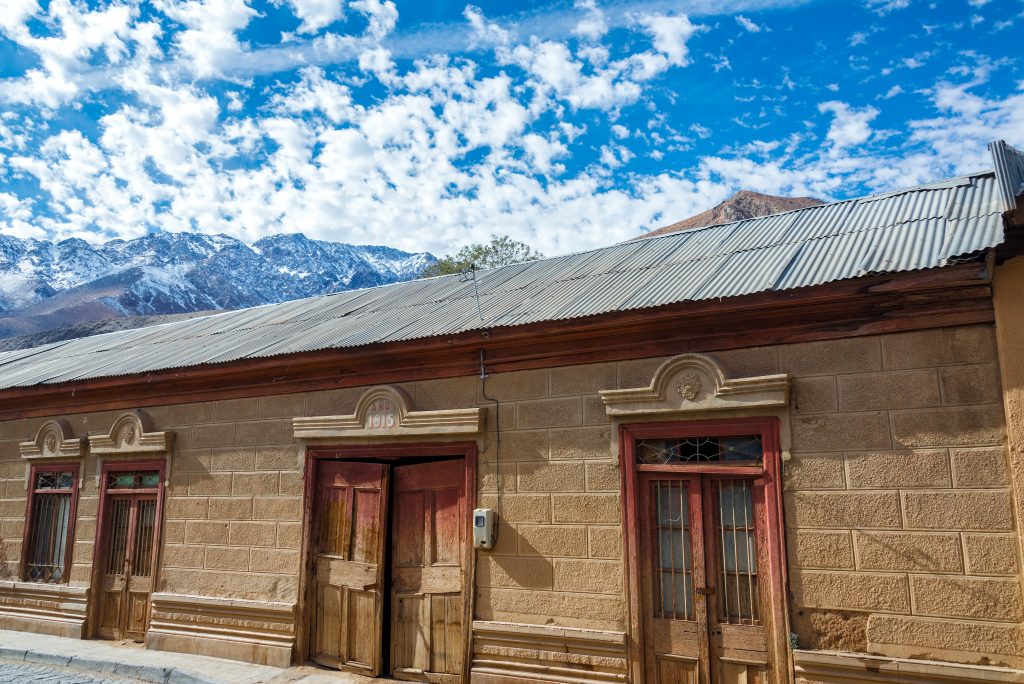
So, your clients have busy schedules and can only go to Chile in January and February… Well all is not lost! With Chile’s massively diverse geology, it’s actually really easy to get off the beaten track even at the busiest time of year.
Who remembers the 2019 solar eclipse? Who doesn’t, more like?! Well, La Serena and its surrounding valleys attracted several thousand eclipse-seekers for a few days in early July and did its best to try to keep everyone happy. But when there’s not an eclipse going on (i.e. 99.99% of the time), this is the area you should be recommending to your clients who want some peace and quiet while getting their fill of sunshine hiking along bone-dry mountain trails with views over the lush green valleys below.
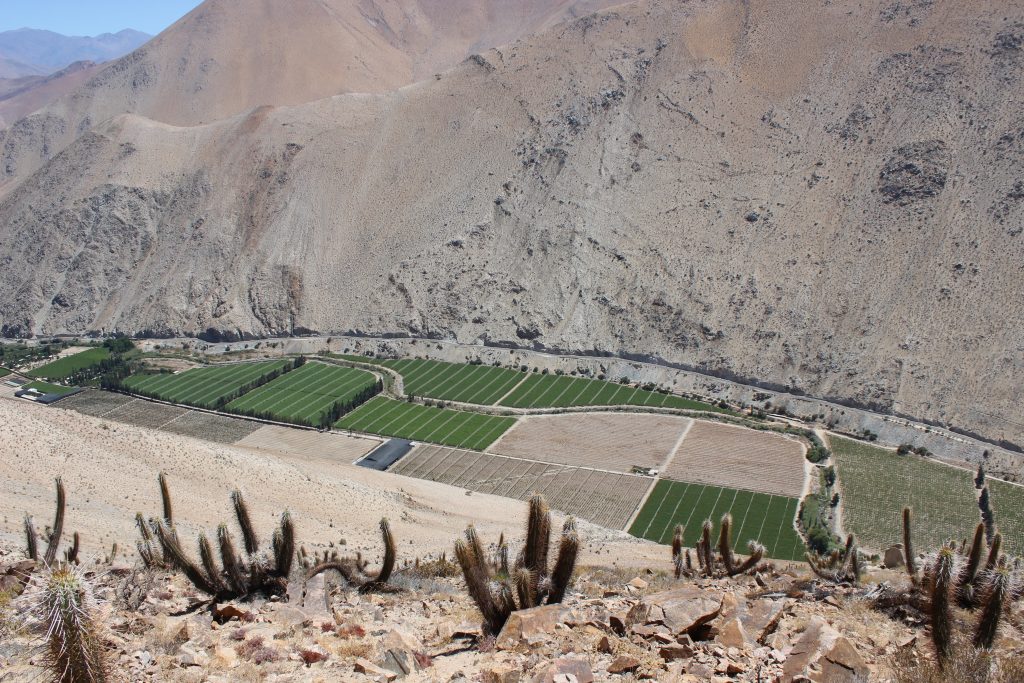
In terms of getting there, La Serena airport (LSC) is about an hour-long flight from Santiago or a scenic drive of a little under 5 hours that’ll introduce your clients to rock-covered mountains and desert pastures framed by cactus hedges until you get to the ocean stretch with its huge sand dunes and giant Pacific Ocean waves that just keep on rolling in as you head north.
For accommodation, Southbound recommend your clients stay at Casa Molle in the Elqui Valley. This stylish lodge with just 24 rooms estate features an outdoor swimming pool and lots of lovely space outside in which to relax and soak up the sun. They could even play golf on the private course if it takes their fancy but it’s also perfect for families or groups who want to make the most of the great outdoors by doing some trekking or horseback riding. Or even a spot of kayaking in a private lagoon, no less.
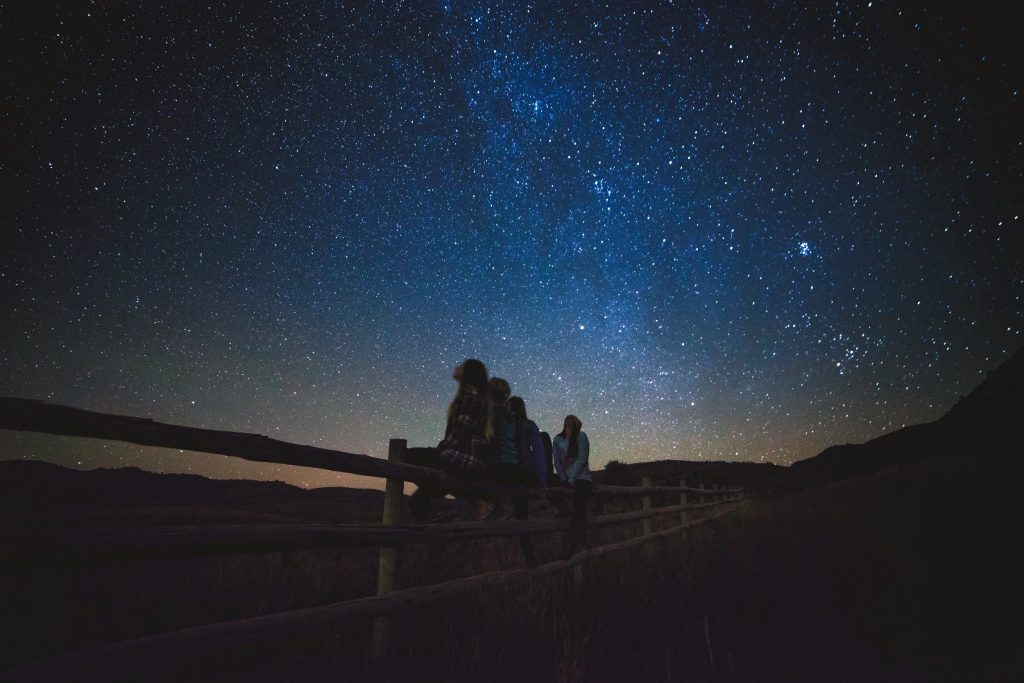
The valleys inland from La Serena enjoy year-round sunshine. Their clear dark skies at night have meant that it’s become one of the best areas of Chile to stargaze and the area is home to many observatories that can be visited such as La Silla, Mamalluca or Alfa Aldea.
To sum up, the Elqui Valley is one of those magical high season spots where you can be up in the mountains in the morning but down on the coast in time for an afternoon of seafood indulgence, but without the crowds. Now if that doesn’t sound attractive, then I don’t know what does.
Costa Rica
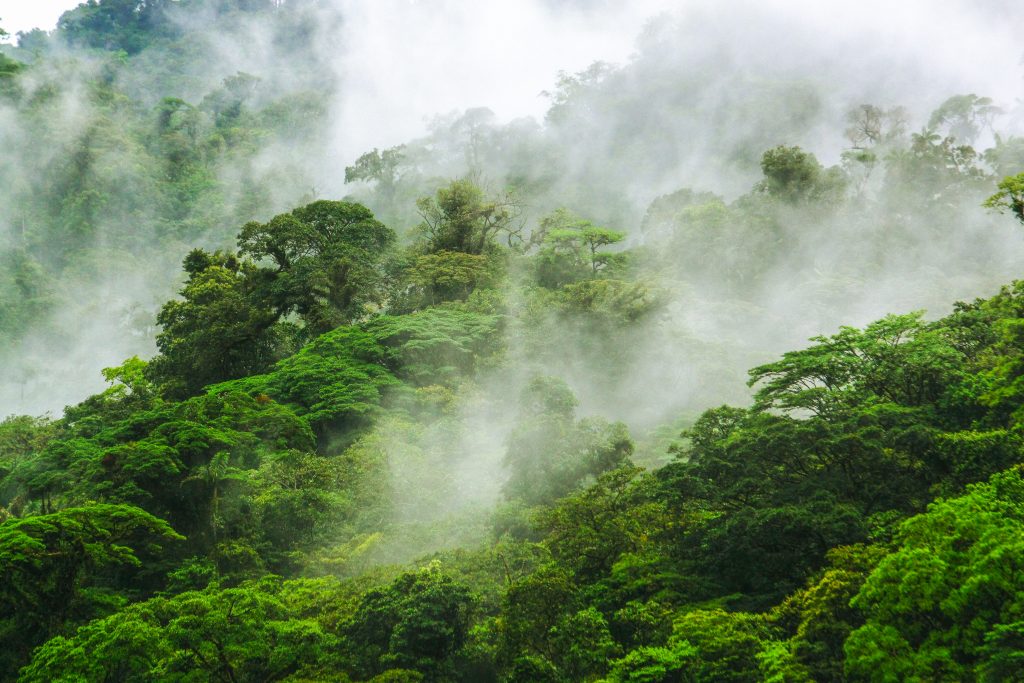
With its amazing range of different habitats and microclimates, Costa Rica might be tiny in size but it packs a punch in terms of biodiversity. To be honest, it’s always the right time of year to visit Costa Rica, but if your clients want to reduce their tourism footprint, just encourage them to visit in green season (June to November) or during the transitional months of May and November. In doing so, they’ll be rewarded with bright and sunny mornings for wildlife viewing, hikes and exploration, and rainy afternoons that lend the perfect excuse for relaxing or enjoying a massage. Full disclosure: I’ve only ever been to Costa Rica in May, September and November, so I know first hand that the Green Season is a great time to visit Costa Rica. I should also point out that with its size and all its microclimates, if it’s raining in one region of Costa Rica, you’re never very far from another region where it won’t be raining!
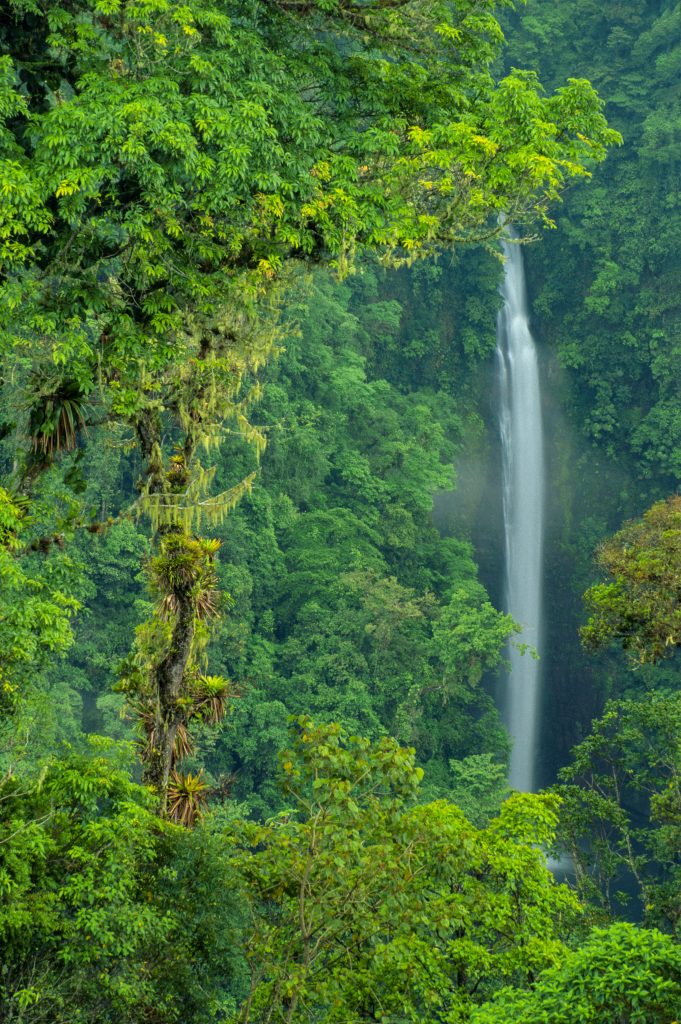
Tortuguero on the Caribbean coast boasts one of the largest nesting populations of Green turtles on the planet. They start arriving in July to lay their eggs and this lasts right through until early October. With it taking just over 9 weeks for the eggs to hatch, your clients may be lucky enough to see the hatchlings emerging from the sand and making their way into the water as late as early December but the core time for this amazing sight is during September and October.
Meanwhile, over on the Pacific coast, Southern Humpback whales start arriving between July and October from the Antarctic. The warm shallow waters of the Uvita area are just right for the whales to give birth and raise their calves. If possible, encourage your clients to include the annual Whale and Dolphin Festival hosted by the Bahia Ballena community. Sea conditions permitting, they will get to go out on boats and get up close and personal with whales and dolphins who seem to enjoy showing off their well-honed acrobatic skills.
The green season in the Central Valley and Guanacaste region also conjures up some meteorological magic – namely the “Veranillo de San Juan” (Little Summer of Saint John). It’s hard to predict the exact dates, but this two-week climatic phenomenon during which virtually no rain falls usually happens during the last two weeks in June.
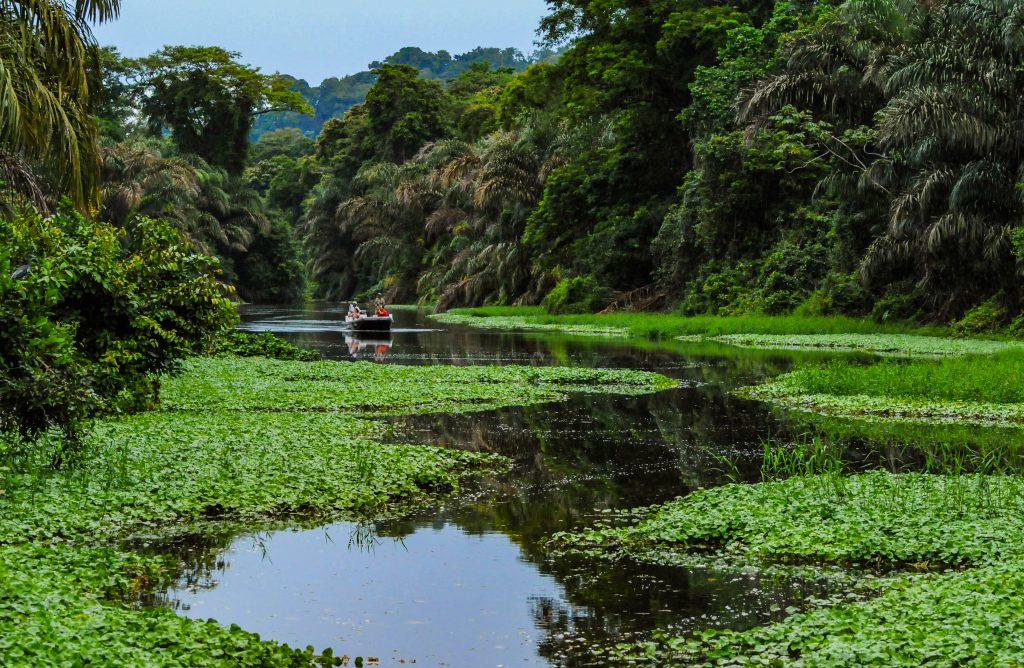
And, finally, as if they needed more incentive, green season travel in Costa Rica offers better value for your clients, as there are lots of special offers such as free nights and lower rates. Travel Excellence will be happy to provide you with all the information you need to give your clients the green light for a green season visit to Costa Rica.
So, it just goes to show that it’s still possible for your clients to have an amazing trip out of season wherever they choose to go.
